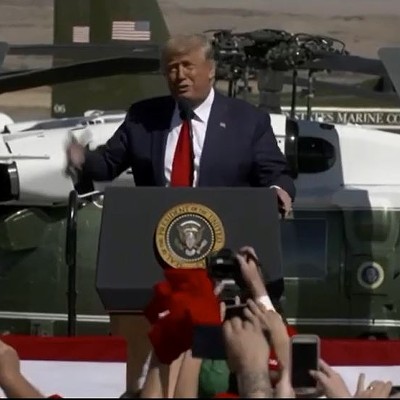As we zipped along Interstate 95 in a sports car one winter morning, we hit a patch of ice that managed to send us first into an exhilarating 180-degree spin, followed by several lesser spins before--thanks to expert handling and no panic--the car faced forward again. I say exhilarating, because on seeing the rush of oncoming vehicles--all considerably larger than our 1969 Austin-Healey Sprite--I knew with complete certainty I was about to die.
It was one of those indescribable moments. But I can confirm what others have said: When you're sure death is imminent, it's not fear but euphoria that rushes through every cell of your corporeal being.
A similar experience led to a decision to move to Arizona. The Southwest wasn't on the radar; we were weighing New Zealand and North Carolina. (There is no reasonable explanation for these choices, but hey, we were young, and unreasonable was the order of the day.) Shortly before we decided to flee New England, a Tucson friend sent numerous letters extolling the beauty of the Southwest. I decided we weren't moving until I'd seen this much-vaunted part of the country.
Albuquerque, N.M., was uninspiring, and Santa Fe's residents all seemed to be floating several feet above the earth, but Tucson, ah ... Tucson. It was monsoon season, the most seductive time of year. I landed at the airport on an overcast afternoon and made my way down the moveable staircase leading from the plane to the tarmac. Since my Southwest-discovery tour originated from a New York airport, I thought this was the coolest thing I'd ever experienced in air travel. I half expected Humphrey Bogart to be waiting at the gate.
But it was only our friend who took me on a mini-tour of the city. Wow! No trees! (Anything smaller than 20 feet doesn't count when you're from New England.) Breathing space! And look: The horizon is visible!
The next afternoon, we were on the obligatory visit to Mount Lemmon when a full-blown monsoon hit. Driving down the mountain in the passenger's seat during a crashing hailstorm was almost as terrifying as facing death on Interstate 95. But my decision was made: Tucson offered so much beauty, so much excitement and so much breathing space, it was clearly the place to be.
Our trek from the East Coast to the desert is its own story, but on arriving in Tucson, we were able to buy a house within a week. Given that we were both collecting unemployment at the time, we were blown away when we learned it was possible to simply assume a mortgage and join the ranks of homeowners. In 1976, a house in a 4-year-old subdivision (what were we thinking?) cost $32,000. When we decided to move, we bought a house in the central city for $28,000.
At that time, Kolb Road was a street leading almost nowhere; a couple of department stores, including Steinfeld's and Jacome's, struggled to survive in a downtown with gritty charm and neither outdoor cafes nor any cosmopolitan pretense; La Placita was a monochromatic beige; people went to the opera in jeans; the population was roughly half what it is now. El Con Mall was thriving, and the words "big box" referred to a large container.
There were no access fees to Sabino Canyon or the Catalina Mountains, and unless you went on a holiday, finding a place to park was effortless. And you could hike for miles without running into another soul.
With the exception of the intersection at Wilmot Road and Broadway Boulevard, getting around Tucson was a breeze. Coming from the East Coast, traffic problems seemed nonexistent, though there was the oddity of people refusing to use their turn signals.
For the first decade or so after settling in Tucson, any time we took an extended trip away from the city, we couldn't wait to get back. But nowadays, it's getting increasingly difficult to differentiate some parts of Tucson from Phoenix or even parts of Southern California.
Driving around Tucson, I find change everywhere. New businesses, new subdivisions, updated strip malls lend an air of frenetic activity in pursuit of profit. And winter's mild temperatures and endless blue skies encourage this nonstop activity. Without layers of snow, sheets of ice or bone-chilling cold, there is very little to slow us down and remind us of the value of nature's interruptions to our human striving.
Except for the monsoons, the blessed monsoons.






